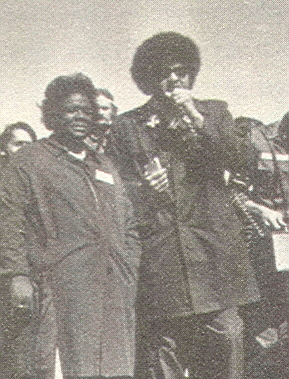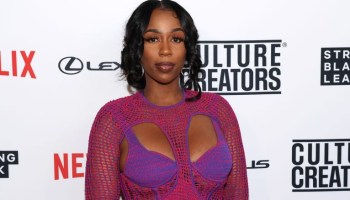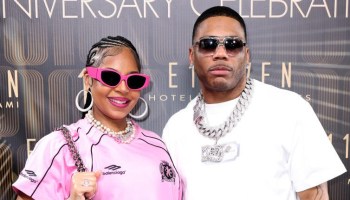*Editor’s Note: For this piece, our writer and editorial team made the decision to use the term “fat” on purpose. In the context of this article, fat is used a descriptor, not a denouncement. We use the term under the knowledge that reclaiming it, even embracing it, is a political act.
Throughout our nation’s history, fat Black women have fought racism, sexism, classism, and a host of other societal ills, yet by and large, have been excluded from the conversation based on fatphobia. In a 1972 essay published in Ms. Magazine, then-President of the National Welfare Rights Organization, Johnnie Tillmon, wrote, “I’m a woman. I’m a Black woman. I’m a poor woman. I’m a fat woman. I’m a middle-aged woman. And I’m on welfare. In this country, if you’re any one of those things you count less as a human being. If you’re all those things, you don’t count at all. Except as a statistic.” That sentiment still rings true today when you look at the current political landscape.
The Centers For Disease Control & Prevention regularly reports figures on the number of obese individuals in the United States, and data analysts quite easily determined 91% of Black women voted for Democratic presidential nominee Joe Biden this past November. But few have explored the reality that fatness, when compiled with being a woman and Black, translates into triple oppression. And how, through political contributions, organizing, and protesting, fat Black Women helped advance voter rights, women’s rights, environmental justice, and disability rights anyhow. Fat Black Women’s civil service has helped progress American politics, yet when it comes time to be recognized for those contributions, they have not been rewarded in the same way white men have.
In a 1972 Texas Observer article, political columnist Molly Ivins recalled how Barbara Jordon, the first Black women elected to the Texas Senate, spoke about her weight in relation to her experience as a young Black woman at the time.
“I am big and fat and Black and ugly, and I’ll never have a man problem,” Jordon allegedly said in response to one of her high school teachers who inquired about her future plans to be a lawyer despite her father’s wishes. “I’ll never get to college unless my father pays for it. So I will do exactly what he tells me to until I am twenty-one years old and then I’ll do what I damn well please.”
A Career By Design: How Kamala Harris Is Redefining Beauty Norms
Fast-forward to current day, in the weeks after the presidential election, Stacey Abrams was credited with turning the state of Georgia blue, thanks to the efforts of her organization Fair Fight. For many, the victory has been toted as the sweetest form of revenge following her 2018 gubernatorial loss to Brian Kemp, the cause of which many believe was racially motivated voter suppression. However, few recall how Abrams was counseled to lose 100 pounds before attempting to run in the first place. And no one has explored what effect size prejudice, among other things, had on the outcome of that election.
But when you’re a triple minority in this country in a sense (despite the fact that the majority of Americans are now overweight or obese), you don’t have time to sit by idly and hope that one day society will apply the same rules to fat Black women as it does fat white men, you act. That’s what Abrams did. That’s what her present-day counterparts Dejuana Thompson, Imani Barbarin, Nse Ufot, and Ashlee Marie Preston, are doing. And that’s what many a fat Black woman in the past has done.
Keep scrolling for more on Johnnie Tillmon and Barbara Jordan:
1. Johnnie Tillmon
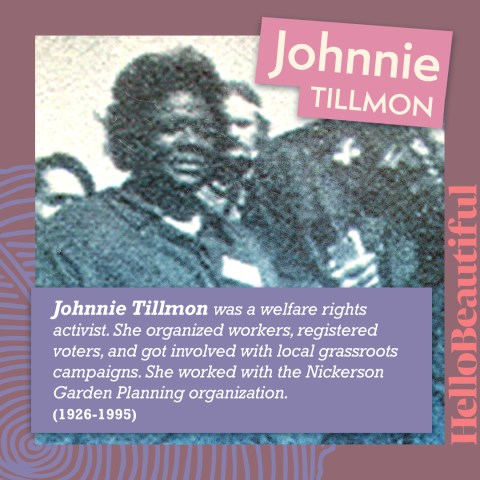 Source:creative services
Source:creative services
Johnnie Tillmon, born Johnnie Lee Percey, was a welfare rights activist. In 1948, she married James Tillmon and they had 6 children together. She left him in 1952 due to his ‘running around’. A few years later, she moved to California where she began to organize workers, register voters, and get involved with local grassroots campaigns. While living in the housing projects, she got involved in the Nickerson Garden Planning organization, an organization that focused on improving the community.
In 1963, Tillmon was forced to get on welfare after learning she had tonsillitis. She organized the first welfare rights organizations in this country, Aid to Needy Children (ANC) due to the disrespect she and other poor Black mothers were experiencing from caseworkers. The program provided food, shelter, and clothing for children. The efforts of her organization later created what we know today as WIC, a social service program that provides women, Infants, and Children medical services and food vouchers.
Later she became the first chair of the National Welfare Rights Organization (NWRO). In an essay published in Ms. magazine,”Welfare is a Woman’s Issue”, she establishes welfare rights as a women’s issue. Johnnie Tillmon was a trailblazer and a campaign for women’s rights. She fought for women to be treated better than their wage and race.
“I’m a black woman. I’m a poor woman. I’m a fat woman. I’m a middle-aged woman. And I’m on welfare. In this country, if you’re any one of those things you count less as a human being. If you’re all those things, you don’t count at all.” –Johnnie Tillmon
2. Barbara Jordan
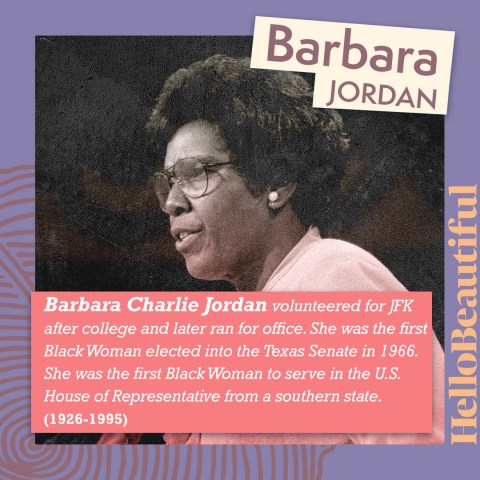 Source:creative services
Source:creative services
Barbara Charlie Jordan was born on February 21, 1936 in Houston Texas. Jordan spent most of her education attending segregated schools until attending Boston University Law School in 1959. After college, she volunteered for John F. Kennedy and was later inspired to run for office. In 1962 and 1964, she was unsuccessful at winning the seat as the Texas House of Representative. She was the first Black Woman elected into the Texas Senate in 1966. She was the first Black Woman to serve in the U.S. House of Representative from a southern state.
While serving on the House Judiciary Hearings committee that reviewed the evidence to impeach President Nixon. In 1976, she delivered the Democratic Convention keynote speech
After she learned that she had multiple sclerosis, she was wheelchair bound, and later retired from politics in 1979. She became a professor at the University of Texas Austin Lyndon B Johnson school of public affairs shortly after. She is buried in the Texas State Cemetery and was the first Black Woman buried there.
“If the society today allows wrongs to go unchallenged, the impression is created that those wrongs have the approval of the majority.” –Barbara Jordan
